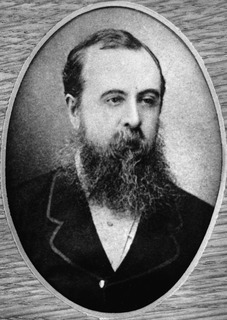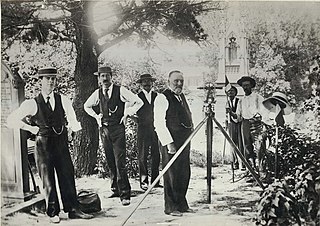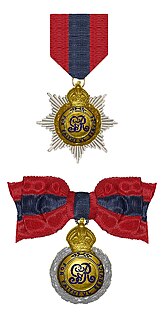Politics in Estonia takes place in a framework of a parliamentary representative democratic republic, whereby the Prime Minister of Estonia is the head of government, and of a multi-party system. Legislative power is vested in the Estonian parliament. Executive power is exercised by the government, which is led by the prime minister. The judiciary is independent of the executive and the legislature. Estonia is a member of United Nations, the European Union, and NATO.
Education in Australia encompasses the sectors of early childhood education (preschool) and primary education, followed by secondary education, tertiary education (universities and Registered Training Organisations. Regulation and funding of education is primarily the responsibility of the States and territories, however the Australian Government also plays a funding role. Education in Australia is compulsory between the ages of four, five, or six and fifteen, sixteen or seventeen, depending on the state or territory and the date of birth.

The Parliament of Victoria is the bicameral legislature of the Australian state of Victoria that follows a Westminster-derived parliamentary system. It consists of the Queen, represented by the Governor of Victoria, the Legislative Assembly and the Legislative Council. It has a fused executive drawn from members of both chambers. The parliament meets at Parliament House in the state capital Melbourne. The current Parliament was elected on 24 November 2018, sworn in on 19 December 2018 and is the 59th parliament in Victoria.

The Northern Development, Mines, Natural Resources and Forestry is a government ministry of the Canadian province of Ontario that is responsible for Ontario's provincial parks, forests, fisheries, wildlife, mineral aggregates and the Crown lands and waters that make up 87 per cent of the province. Its offices are divided into Northwestern, Northeastern and Southern Ontario regions with the main headquarters in Peterborough, Ontario. The current minister is Greg Rickford.
The Surveyor General of Western Australia is the person nominally responsible for government surveying in Western Australia.

Arthur Macalister, was three times Premier of Queensland, Australia.
The machinery of government is the interconnected structures and processes of government, such as the functions and accountability of departments in the executive branch of government. The term is used particularly in the context of changes to established systems of public administration where different elements of machinery are created.
The lands administrative divisions of Western Australia refer to subdivisions of the state of Western Australia for cadastral purposes, most of which have been in place since the 19th century. The state is divided up for this purpose into five land divisions, which in turn are subdivided into land districts, which correspond to counties in other Australian states. These districts are then subdivided further into numbered locations, as well as gazetted townsites. Together, they form part of the lands administrative divisions of Australia.

The Flinders Peak Group is an unnamed range of hills located on the northern edge of the Scenic Rim Region, south west of Logan City and south east of the City of Ipswich in South East Queensland, Australia. The summit in the Range is Flinders Peak reaching 680 metres (2,230 ft) above sea level.

The Aboriginal Shire of Pormpuraaw is a special local government area which is located on western Cape York Peninsula in Queensland, Australia. It is managed under a Deed of Grant in Trust under the Local Government Act 2004.
National biosecurity in Australia is governed and administered by two federal government departments, the Department of Health and the Department of Agriculture, Water and the Environment. The Biosecurity Act 2015 and related legislation is administered by the two departments and manages biosecurity risks at the national border. The Act aims to manage biosecurity risks to human health, agriculture, native flora and fauna and the environment. It also covers Australia's international rights and obligations, and lists specific diseases which are contagious and capable of causing severe harm to human health. Each state and territory has additional legislation and protocols to cover biosecurity in their jurisdiction (post-border).
The Department of Education is a ministerial department of the Queensland Government responsible for the administration and quality of education in Queensland, Australia. The department is composed of two separate portfolios, Education Queensland and Early Childhood Education and Care (ECEC). The department also encompasses the Queensland Curriculum and Assessment Authority, a separate statutory authority responsible for creating syllabuses, curriculums, and assessment.

Arthur Orpen Herbert was a public servant in Queensland, Australia. He was the second commissioner of Queensland Rail.

Surveying in Australia is triangulation-based and shares many similarities with the United Kingdom, including the title deed system. However, a distinctive feature of surveying in Australia is the Torrens System, where real estate records are held in a central deposit and guaranteed by the state.

William Nevin Tatlow Hurst, ISO was a senior Tasmanian civil servant. In 1925 he succeeded the Tasmanian Surveyor-General, E A Counsel, as the head of the Tasmanian Department of Lands and Surveys, although with the title of Secretary for Lands.
Lake Flannigan is a natural freshwater lake on King Island, Tasmania, Australia, situated four kilometres south of the Cape Wickham Lighthouse, in the northern locality of Wickham.

The history of state education in Queensland commences with the Moreton Bay penal settlement of New South Wales in Australia, which became the responsibility of the Queensland Government after the Separation of Queensland from New South Wales in 1859.
Chloe Munro was an Australian energy expert.

The Department of Communities, Housing and Digital Economy (CHDE), formerly the Department of Housing and Public Works, is a ministerial department within the Queensland Government, tasked with providing housing, sport, digital technology, and urban design and architecture services to Queensland individuals and businesses. HPW was also responsible for providing procurement, office space and digital services to Queensland Government departments.
The Australian government's procurement activity is governed by the Commonwealth Procurement Rules and overseen by the Department of Finance. The rules were revised on 1 January 2018. States and territories also have their own procurement policies and legislation.












